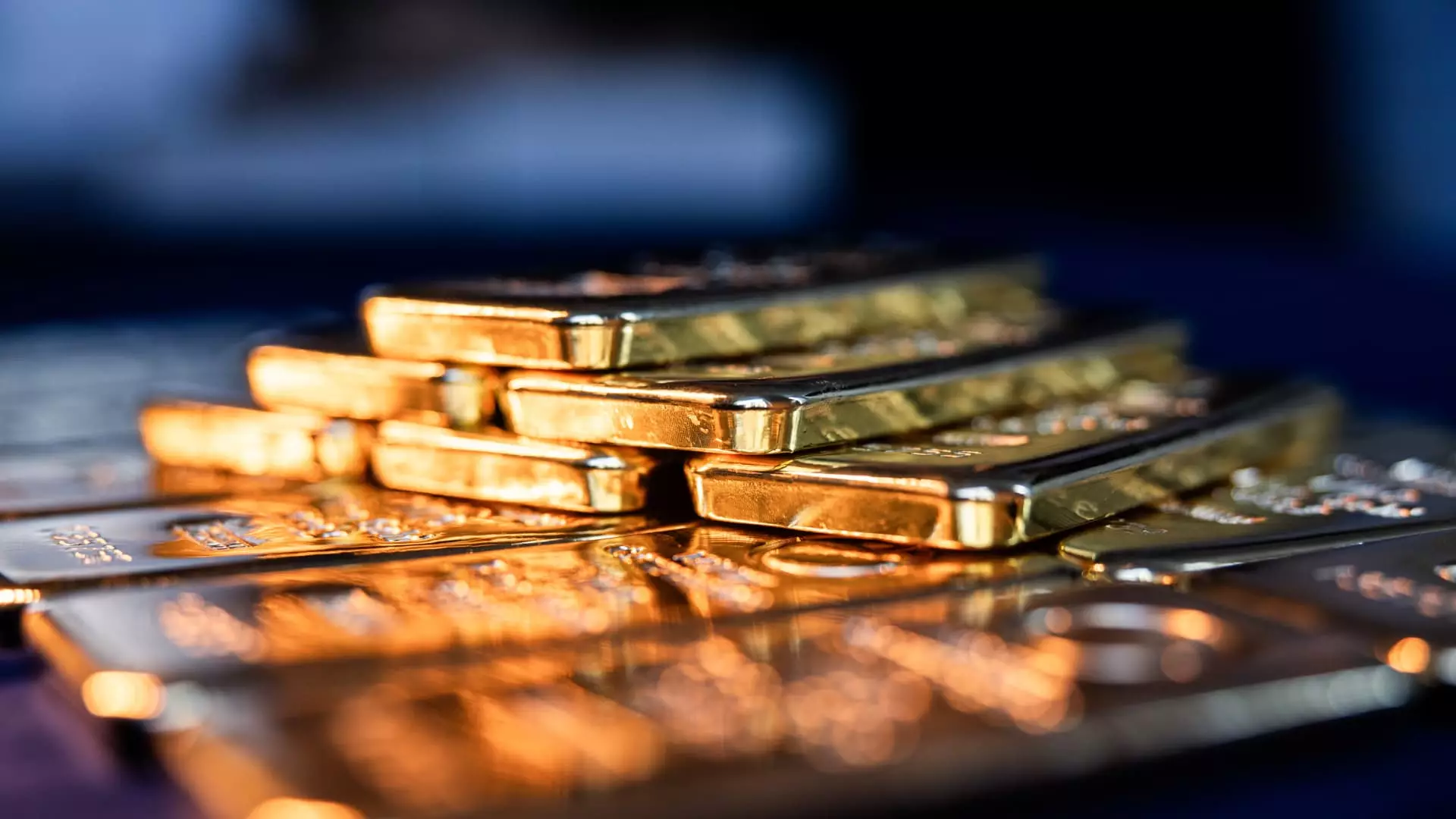In an era rife with geopolitical tensions and economic tremors, the allure of gold has grown exponentially. Often heralded as a reliable safe-haven asset during crises, gold’s recent surge in value is tempting for many investors. However, this spike could evoke more caution than enthusiasm as financial analysts voice concerns that the market may be nearing a peak. The current reassurance investors feel as they observe soaring prices is likely fleeting, resembling a mirage in a desert of uncertainty.
With gold surpassing $3,000 an ounce, this significant milestone might lead to the misconception that there’s a sure path to profits. Financial professional Sameer Samana from Wells Fargo highlights this sentiment, arguing that we might be experiencing “maximum optimism.” For those rushing to participate in this frenzy, it’s crucial to ask: are we chasing a phantom or investing wisely? It seems tantamount to arriving at a party only to find that the main act has already performed and everyone else is gathering their belongings in anticipation of the night concluding.
The Impact of Economic Policies
Amid escalating trade wars and tariffs—particularly between the United States and China—gold’s value is often overlooked in the context of broader market turbulence. President Trump’s sudden imposition and subsequent postponement of tariffs shake investor confidence, propelling many to seek the comfort of gold. Historically, however, commodities like gold excel in environments of inflation rather than outright market recession. This is where the nuances of economic indicators become essential. As several analysts suggest, the recent boom in gold prices may not hold water under the scrutiny of economic fundamentals.
Investment experts like Jordan Roy-Byrne counterbalance this narrative by suggesting that while gold remains at historical highs, the trajectory could continue upward in the coming years. This perspective, however, runs the risk of misguiding those who may take these assertions as justifications for jumping into a tumultuous market. It stands to reason that while positive sentiments persist, many unknowns loom ominously. Are the euphoric predictions rooted in tangible facts or merely wishful thinking?
Mechanics of Gold Investment: ETFs vs. Physical Assets
Investing in gold traditionally comes in two forms: physical bullion and gold-related exchange-traded funds (ETFs). Both avenues serve distinct strategies within an investment portfolio. The overwhelming consensus among financial advisors is that gold should only account for a minor percentage—perhaps up to 3%—of one’s total investment portfolio. This rule of thumb derives from the need to maintain a diversified approach, one that spreads risk across various financial vehicles rather than hinging on a single, potentially volatile asset.
The convenience and liquidity offered by gold ETFs like SPDR Gold Shares (GLD) and iShares Gold Trust (IAU) make them favorable options for cautious investors. They allow one to hedge their portfolio with less hassle compared to physically storing and securing gold bars or coins. Yet, the rise of consumer mentality towards tangible assets, spurred by chain stores like Costco capitalizing on the growing gold frenzy, complicates these recommendations. While store-sold gold bars may evoke a sense of tactile security, they carry with them costs associated with safekeeping and insurance—factors often understated in discussions about investments.
The Jewelry Factor: Personal Enjoyment vs. Financial Wisdom
The psychological allure of holding gold in the form of jewelry adds another layer to this complex investment landscape. High-quality jewelry, particularly those crafted with higher-karat materials, can serve dual purposes: offering aesthetic pleasure combined with potential for financial appreciation. The notion that high-end pieces provide a hedge against financial instability is not new. Historically, individuals have placed value on beautifully crafted items, often viewing them as both emotional and monetary investments.
However, one must tread carefully when intertwining emotional connection with financial expectations. As mentioned by experts like Tim Schmidt, while jewelry can indeed appreciate in value, it requires careful selection based on craftsmanship and brand reputation. This interplay complicates matters further, as individuals seeking patched emotional security through gold jewelry may risk overvaluation of these emotional benefits when considering financial returns.
The Need for a Balanced Approach
Increasing volatility in the financial markets, propelled by tariffs and economic uncertainties, has many investors looking for alternative shelters, priming them for a “flight to safety.” This flight towards gold may provide momentary respite, but it carries inherent risks especially if investments are made without understanding the broader economic context. The necessity for maintaining cash reserves and adjusting financial goals means that caution must be a significant component of any investment strategy during turbulent times.
Instead of diving into gold-driven investments or fetishizing physical gold as a magical shield against economic forces, it’s crucial for investors to critically assess their financial objectives. Sensible portfolio diversification paired with a deep understanding of market dynamics may prove far more effective than succumbing to the sirens of situational urgency and perilous hype.

